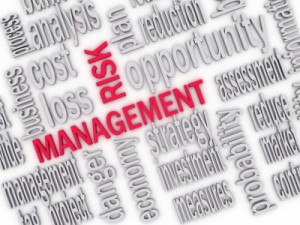
#1-Recognize Your One Most Important Asset
Of all the things that can help you make money, invest it wisely and create a financially independent lifestyle, one stands “head and shoulders” above the rest. What one factor do you consider to be the most important? The one thing is the head upon your shoulders. Your future success hinges primarily upon developing your skills, knowledge, social and professional networks, and making good career choices. Take the time to invest in yourself to yield truly unimaginable dividends. Although luck may play a small part, as the old saying goes, “chance favors the prepared mind”. After all what good is a “lucky break” if you aren’t prepared to capitalize on it.
#2-Don’t Sweat the Long-Term but Create the Baby-steps to Get You There
Planning for retirement or plotting a decade’s growth of financial expansion are all lofty, admirable goals. But as anyone knows, life throws a lot of curve balls. Thus, it’s hard to plan for 30 years down the road. Life is made up of a series of baby steps. You should start with long-term goals and then work backwards. What medium term milestones will allow you to reach your long-term goals? Then you can set the baby-steps that will allow you to reach those milestones. By breaking it down into bite-sized pieces you will slowly but surely get closer and closer to your goal and you can make course corrections along the way.
Professionals, like those at Financial Guidance Center, can help you make your finances more manageable. Breaking financial achievements into short-term goals, such as paying off a single credit card or starting to contribute to a pension plan, are invaluable in achieving real solvency. Make sure your goals are concise and measurable in order to ascertain success. After all, a million dollars is made one penny at a time, so small goals definitely add up.
 #3-Only Take Prudent Risks
#3-Only Take Prudent Risks
A wise man once said, “nothing ventured nothing gained”. Which goes along with being prepared to take advantage of an opportunity when it presents itself. Being willing to take prudent risks can help you to break out of a financial rut. Smart risks that could build financial security could include:
- Moving to a city with better job prospects
- Going back to school
- Moving to a lower paying job with more potential for upward mobility
Sometimes, playing it safe and settling for mediocrity is the most dangerous risk to take. Always consider your options and temper any risky ventures with wisdom.
But often people make the opposite mistake and think that high risk always equals high reward. But that isn’t the case. You need to weigh the risk against the reward. If there is a 10% chance that you will make 5 times your money and a 90% chance you will lose it all should you take the risk? Probably not. why? Because in the long run you will lose. Lets say you invested $100 each in ten opportunities with these exact odd. What would be the result?
| Amount Invested | Return | |
| 1 | $100 | $500 |
| 2 | $100 | $0 |
| 3 | $100 | $0 |
| 4 | $100 | $0 |
| 5 | $100 | $0 |
| 6 | $100 | $0 |
| 7 | $100 | $0 |
| 8 | $100 | $0 |
| 9 | $100 | $0 |
| 10 | $100 | $0 |
So if we add up all the investments and all the returns we find that over time we will have invested $1000 and gotten $500 back a very bad investment! So what if the odds were that we would get $1000 back 10% of the time? It’s still a bad investment because you took the risk and end up investing $1000 to make $1000. Why bother?
What about a 90% chance that you would get back $110 for every $100 invested? Sounds pretty good… 90% chance of success. Should we bother?
| Amount Invested | Return | |
| 1 | $100 | $110 |
| 2 | $100 | $110 |
| 3 | $100 | $110 |
| 4 | $100 | $110 |
| 5 | $100 | $110 |
| 6 | $100 | $110 |
| 7 | $100 | $110 |
| 8 | $100 | $110 |
| 9 | $100 | $110 |
| 10 | $100 | $0 |
In this case we would have invested $1000 over the long term and gotten back ($110 x 9)= $990. Still not a good investment. Unfortunately, we can’t know the precise odds of success in every investment. But by only investing in those with a high probability of success and a moderately high return you can stack the deck in your favor. And if you even take a guess at the chance of success and the estimated return and plug the numbers into a table like this you can decide logically if you should risk it or not.
#4-Learn the Art of Financial Sophistication
Making sufficient money is only half the battle. Once you’ve achieved a satisfactory salary, you need to learn the fine art of investment and money management. The most financially literate individuals know how to invest in order to turn money into true wealth. This is one set of skills that will pay dividends throughout your entire life.
Becoming financially secure is not always an easy journey. However, with the right preparation combined with the right goals and only taking the right risks, a bright financial future can be yours.
Images care of D D Pavumba and David Castillo Dominici @FreeDigitalPhotos.net


 #3-Only Take Prudent Risks
#3-Only Take Prudent Risks